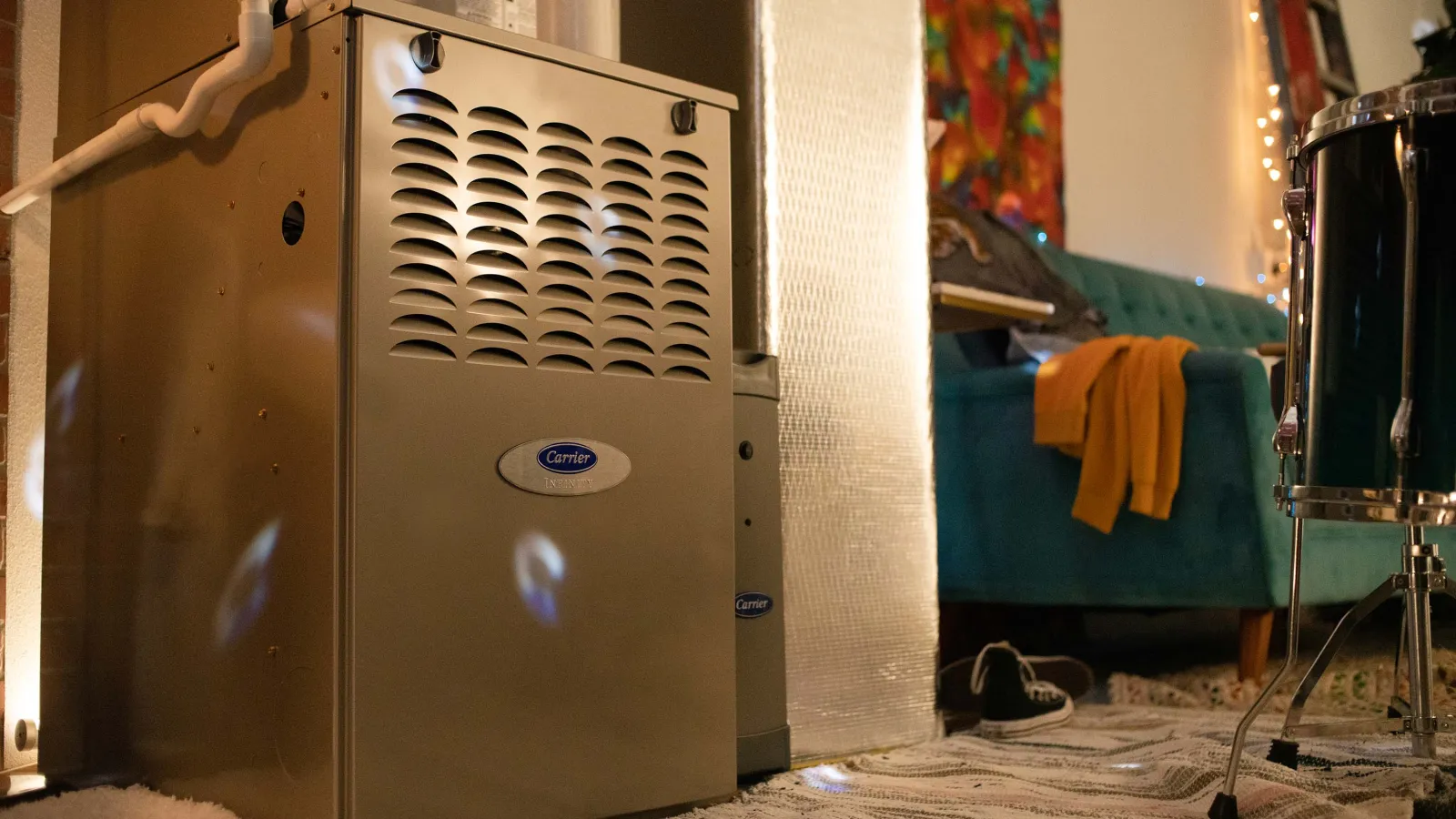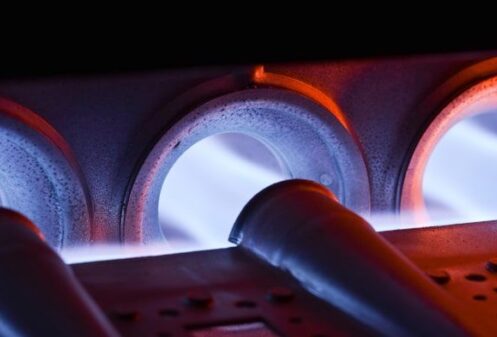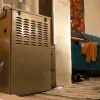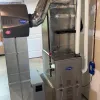This size of your furnace is a really big deal if you like feeling comfortable.
When your furnace isn't the right size, you could end up with extremely inconsistent heat throughout your home during the winter. Some parts of your house will feel like Death Valley in July while other parts stay colder than a godforsaken glacier in Antarctica.
Yes, we're exaggerating. But you get the idea.
There isn't a simple way to answer the question, "How big of a furnace do I need?"
To figure it out, you need to perform a Manual J load calculation. This exercise involves taking several measurements throughout your home and noting key attributes of the structure itself and the space around it. After all is said and done, you find out the ideal number of BTUs before replacing your furnace.
Manual J load calculations require information like:
- Insulation values throughout the home
- Insulation types
- How many stories do the home has
- Roof and shingle type
- Orientation of the home concerning the sun
- Air infiltration levels
- Window type and size
- How many windows the home has
- Height of the ceiling
- Duct location and duct insulation considerations
- Heat loss and gain
- The presence of shade trees around the home
- Whether you're planning major energy efficiency upgrades, which could tighten up the home and change the results of the load calculation
- Square footage and local climate
That's a lot, and it's not even all the stuff that's needed! More often than not, you'll want a professional to perform the load calculation. We use special software that crunches the numbers and tells you exactly what size HVAC system you need. Others might perform the calculation manually. What matters is that you don't skip the load calculation!
Anyway, your Manual J results help prevent you from getting…
- A furnace that's too big: Think scorching heat in some places, not enough heat in others.
- A furnace that's too small: This is less common, but you can imagine what it entails. The furnace won't be capable of providing adequate heat. You'll be cold.
If you're wondering why the last HVAC contractor you spoke with didn't mention any of this stuff, well…
Most HVAC contractors skip the Manual J load calculation
Either they don't know how to do it, won't take the time, or just think they know enough to avoid having to do it. Regardless, a contractor is doing you a disservice when they eyeball your house, ask for the square footage, and blithely assert that you need an 80K BTU (or whatever) furnace.
Sometimes, you'll luck out and the furnace will be fine. But we work with ACs and furnaces every day, and we've seen lots of homeowners get oversized units because the contractor didn't do their homework.
Usually, you don't know right away your furnace is too big. You just notice you're uncomfortable and can't get the furnace to heat the way you want it to. People are often surprised to learn that they got the wrong size furnace, but it happens all the time!
So, what's the right answer to the question, "How big of a furnace do I need?"
Whatever the load calculation tells us. That's always the right answer!
Other furnace attributes that impact comfort
So, the answer to the furnace size question is that it depends. Not exactly satisfying, we know, but it's the truest answer we can provide.
But furnace size isn't the only thing that impacts wintertime comfort. It's perhaps the most important thing, but there's another really big consideration to make before you purchase your next furnace.
Furnaces are available with different stages of heat. Your choice of single-stage, two-stage, or fully modulating will have a major impact on comfort.
A single-stage furnace is the most common variety. It turns on when the temperature dips below the thermostat setting and runs until you hit the target temperature. Then it turns off. These types of furnaces run at full blast every time they turn on. They also use a lot of energy every time they power up.
The other two furnace types use less energy and do a better job of maintaining consistent temperatures throughout your home.
Two-stage furnaces operate at — you guessed it! — two different stages. Most of the time, they'll produce just a small amount of heat. It's typically enough to maintain your home's temperature. They'll use the more powerful stage during temperature extremes or when you boost the temperature on your thermostat by a significant amount. Since two-stage units don't power on as often (remember, they run at the lower level most of the time), they use less energy.
Modulating furnaces take the two-stage idea even further. Instead of just having two different stages, the furnace ramps up and down to match the exact heating needs of your home at any given time!
Both two-stage and modulating furnaces have variable speed blowers. Compared to the fan in a single-stage furnace, these fans change their speed to better match the home's exact cooling needs.
The Achilles heel of furnace sizing in the South: the blower drive
Here in Atlanta, we have a special obstacle when determining how big of a furnace you need. Believe it or not, it all has to do with the size of your AC.
You see, it's really hot here during the summer. That being the case, a lot of homes need powerful air conditioners to manage the cooling load.
Why does that affect your furnace? Well, imagine we did a load calculation and determined you need a 30K BTU furnace. The thing is, your AC provides 4 tons of cooling. No 30K BTU furnace's going to match your 4-ton blower drive. It just doesn't exist. You'll have no choice but to get a furnace that's way bigger than what you need.
So, what do you do?
If your budget allows for it, the best option is to get a two-stage or fully modulating furnace. Since they're designed to provide reduced heating when the heating load is lower, you're far less likely to suffer the negative consequences of a standard, single-stage furnace that's oversized.
Another option — and this makes sense if you're replacing both the furnace and the AC at the same time — is to use a dual fuel system.
With a dual fuel heating system, you'll install an electric heat pump in addition to your gas furnace. The heat pump will operate on those cool-but-not-quite-cold days and the system will only switch to the gas furnace on very cold days. Think temperatures in the 40s or below.
Why does this mitigate the oversized furnace problem? Well, an oversized furnace is less of an issue on cold days and nights when there's a big heating load. You'll be glad the furnace is running hard at full blast!
But a furnace that's too powerful can make you seriously uncomfortable on milder days. The electric heat pump, on the other hand, will do a better job of handling the exact heating load. It's like adding another stage of heat to the system — similar to what you get with a two-stage furnace.
Did we mention dual fuel systems are also very efficient? On mild fall and winter days, it's often less expensive to use an electric heat pump than it is to run your furnace. If you're replacing your entire HVAC system, dual fuel can be a great option for both energy efficiency and comfort.
Heat stages don't matter as much as furnace size, but they do matter.
All else being equal, an oversized two-stage furnace will underperform relative to a properly sized single-stage furnace. However, a fully modulating furnace will greatly outperform any single-stage unit, even when both are the correct size.
So, furnace size > heat stages. But heat stages do impact comfort.
When choosing a furnace, you'll need to consider a lot of different factors. Heat stages, whether it's a standard efficiency furnace or high efficiency model, atmospheric vs. closed combustion… all of these things matter.
Still, furnace size is the most important factor of all.
Not sure how big of a furnace you need? We can help.
If you live in Metro Atlanta and think it's time to replace your furnace, give us a call! We'll visit your home, listen to your concerns, and point you in the right direction.
When it's the right time to replace your furnace, we'll always perform a Manual J load calculation to ensure you get the right size unit for your home. Call us at (404) 798-9672 today or schedule service online!






